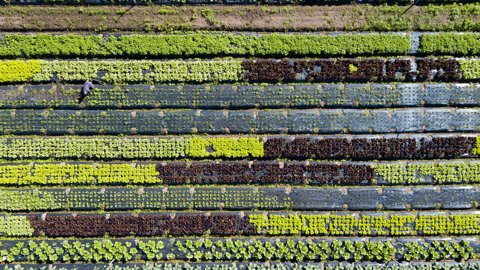Can you give a financial product a color? Yes, you can. Because that is exactly what happens as a consequence of the Sustainable Finance Disclosure Regulation (SFDR). The main purpose of this EU regulation is to combat ‘greenwashing’ by financial institutions. Mirte Bronsdijk (Senior Responsible Investment & Governance Manager) explains what this regulation means for APG.
The word disclosure already indicates what these regulations aim to achieve. Financial market participants must disclose information that shows how sustainable their financial products are. “SFDR requires all financial products we offer to be classified,” says Mirte. “There are three flavors: the gray, or Article 6 products; the light green, or Article 8 products; and the dark green, or Article 9 products. These are the three levels of sustainability, from gray (not sustainable) to dark green (100 percent sustainable). Of course, there are quite a few market participants that use the term ‘sustainable investments’. But according to SFDR, you are no longer permitted to do this if your products do not comply with the strict definition of sustainable investments. If you do, you may be guilty of greenwashing.”
How does this affect APG and its pension fund clients?
“We have recently assessed all our financial products with the SFDR yardstick. These include the investment pools in which our clients participate and the investment mandates in which they invest individually. On March 10, 2021, for the first time, market participants including APG and our clients, were required to post information about the sustainability of their financial products on their websites in line with SFDR.”
SFDR has been around for a while. So what exactly is new as of January 1?
“The further detailing of SFDR ('level 2’ regulations) was still work in progress on March 10, 2021. Everything we posted on our website on March 10, 2021, was based on the ‘level 1’ regulations and on what we knew then. Between then and now, the European Commission (EC) and our regulator, the Financial Markets Authority (AFM), provided more clarity, and in mid-2022 ‘level 2’ was established. Those regulations apply as of 1 January 2023, and impose more detailed requirements than 'level 1'.”
What changed on January 1 in terms of the SFDR information on apg.nl?
“We have recently been working on a separate Asset Management environment on our website, with a dedicated section for SFDR information. This is because the regulations also clearly state that we must present sustainability information about our financial products on our website in an accessible, readable and navigable way."
In addition to preventing greenwashing, the SFDR should also make it easier to compare sustainable financial products. APG, however, has no retail clients. Who is this information intended for?
“These regulations apply both to us and to our pension fund clients. For APG, this is the first time that we have posted so much information on individual financial products on our website. One of SFDR's main goals is to prevent greenwashing. Previously, each asset manager took a different approach to presenting products as ‘sustainable’, ‘green’, ‘responsible’, and so on. SFDR defines what a sustainable investment is. However, as it is up to market participants to further flesh out elements of this definition, you still get different interpretations. Therefore, I don’t know if comparing sustainable financial products has become easier since January 1.”



